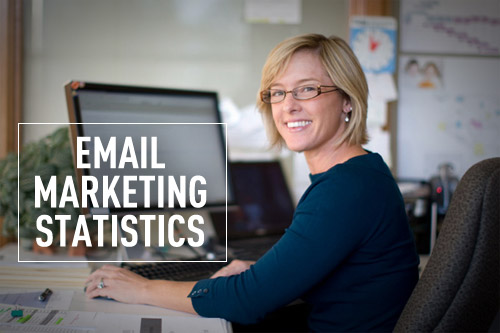
Email marketing is constantly evolving. You need only watch the headlines to see that. But as the market adapts, it also reveals different ways in which you can improve your email marketing strategy one tweak at a time -- and identifies the true best practices.
Here’s a look at four common email marketing pain points and the data you need to see to make educated decisions about your campaigns.
- Overcoming Email Deliverability Issues
- Determining the Best Email Frequency
- Choosing the Right Email Timing
- Increasing Email Open Rates
Overcoming Email Deliverability Issues
Email deliverability concerns almost every marketer out there. When you’re paying for each email you send, maximizing the optimal percentage of people that actually receive the email in their inbox is important. There are two main reasons that emails can fail to deliver: hard bounces from inactive inboxes and soft bounces from active but delayed inboxes.
Pro tip: The answer to improving email deliverability is to prune your list frequently.
According to Demand Metric’s B2B email marketing study, 25 percent of email addresses become invalid over the course of a year due to factors like retiring or leaving a job, and 17 percent of marketers don’t know how many invalid email addresses stick around in their databases.
Proactively pruning and sanitizing your email list doesn’t have to be an intimidating all-day event: your email vendor should automatically remove hard bounces and identify the soft bounces that happen over and over again.
Not only will this improve your deliverability rate and save you money, but it may also save your company's email reputation. Continuing to send email to non-responsive or invalid email addresses increases the likelihood that spam filters will mark your campaign as spam, further damaging your email inbox placement rates.
Determining the Best Email Frequency
Another question we hear a lot is, “How much is too much email?” And the answer may surprise you.
In 2013, news spread in marketing circles that sending more email leads to more customer engagement. Mailchimp evaluates this trend and finds that it’s true… But only to a point. Here’s an excerpt:
If you’ve got 10,000 addresses and every time you send to them you get 100 purchases, then by sending to these addresses twice a month instead of once, you’d expect to get 100 more purchases, right? That’s money in your pocket! Why not go for it?
And to a point, these folks are right. But it’s not that simple.
You may be able to increase your frequency to drive purchases, or you may not. Here’s why: Engagement is not independent of frequency. As you send more, engagement per campaign goes down. So in steady-state (we’ll go into this more) there’s a frequency sweet spot you need to hit.
The piece goes on to reveal that you can raise email frequency all you want, so long as there’s a hard end-date. For example, the Obama 2012 election campaign had a clear shelf life. But if you’re a business that plans to stay in business long past an election, you’ll want to aim for engagement, not frequency.
In some industries, your prospect has an unlimited amount of questions. They may benefit from a lot of content, while simple, less-considered purchases don't require frequency. The only way to find out the perfect frequency for your prospects is to test with your target audience in mind.
Pro tip: As long as your message is relevant and helpful, email frequency won't matter as much as you think.
Case in point: We developed an automated email drip sequence of 6 messages over a 14-day period for a software company. Because the emails were helpful and relevant based on customer research, the unsubscribe rate was less that a half a percent.
Choosing the Right Email Timing
The best time of day to send an email depends on your target audience.
You’ll want to keep in mind different aspects of the clients you’re emailing, such as location (are they in the United States, or global?) and time zone (East Coast? West Coast? Brazil?). To truly optimize the timing of your email, you may need to further segment your email marketing lists to account for these location-based pieces of the puzzle.
If you’re looking for harder statistics to work from, I recommend you check out MailChimp’s Email Genome Project, which looks at data from 4+million global email users and recommends a good time for your campaign. Here are a two gems backed up with data on the site:
- More people open emails during the day rather than at night (more specifically, between 1pm and 5pm).
- More people send emails on Tuesday, Wednesday, and Thursday, than other days of the week. Sending on other days may improve your click rate.
Pro tip: After all of the research that's been done on this topic, what really matters is that you're sending relevant messages to prospects and customers that have formed a relationship with you. Don't be too concerned about timing.
Increasing Open Rates
By now you know that a huge email list isn’t the most important thing in the world -- it’s the engaged email list that will take your business to the next level. But when email open rates hover between 17 and 25 percent, depending on your industry, you want to do all you can to beat the spread.
Open rate comes down to the "from" name (hopefully, this is coming from a real person and not a company name) and a good subject line.
Pro tips: Use a real person's name in your campaign's "from" name, and write a short, impactful subject line that exudes helpfulness. Give them something they can use.
Share & Prove You Found It First
The Digital Slate
Looking for timely digital marketing and sales insights to grow your business? Subscribe to our monthly digital newsletter for marketing professionals.
Subscribe


